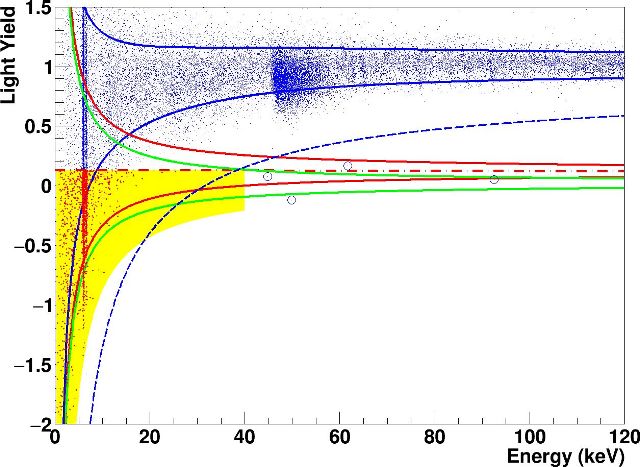Jan 29 2016
The origin of matter in the universe has puzzled physicists for generations. Today, we know that matter only accounts for 5% of our universe; another 25% is constituted of dark matter. And the remaining 70% is made up of dark energy. Dark matter itself represents an unsolved riddle.
 Data gathered by the detector module Lise depicted in the light yield energy plane.
Data gathered by the detector module Lise depicted in the light yield energy plane.
Physicists believe that such dark matter is composed of (as yet undefined) elementary particles that stick together thanks to gravitational force. In a study recently published in EPJ C, scientists from the CRESST-II research project use the so-called phonon-light technique to detect dark matter. They are the first to use a detection probe that operates with such a low trigger threshold, which yields suitable sensitivity levels to uncover the as-yet elusive particles responsible for dark matter.
Until quite recently, the so-called WIMP - Weakly Interacting Massive Particle - was the preferred candidate for a new elementary particle to explain dark matter. However, the asymmetric dark matter particle models have attracted more and more interest in the past few years. The experimental detection is no different from the scattering of two billiard balls, as the particle scatters on an atomic nucleus. The detection method is based on the fact that the scattering would heat up a calcium tungstate (CaWO4) crystal.
The challenge: the lighter the dark matter particle is, the smaller the energy deposited in the crystal is. Currently, no other direct dark matter search method has a threshold for nuclear recoils as low as 0.3 kiloelectronVolt (keV). As such, the CRESST-II team are the first to ever probe dark matter particle masses at such low mass scale (below one GeV/c^2-as far as 0.5GeV/c^2). The next-generation CRESST-III detector is currently being upgraded and promises to reach thresholds of 100 electronVolts (eV), following successful tests of prototypes.
Source: http://www.epj.org/